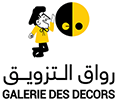Artificial grass in Tunisia, also known as synthetic lawn or artificial turf, is a floor covering made from synthetic fibers designed to mimic the look and feel of natural grass. It is increasingly used in a variety of environments, whether for residential spaces, sports fields, public spaces or landscaping. Here are a few points to consider about artificial grass:
1. Advantages :
Low maintenance: Artificial grass in Tunisia requires less maintenance than natural grass.
Consistent appearance: Unlike natural grass, artificial turf maintains a consistent appearance throughout the year, regardless of weather conditions.
Resistance: It is often more resistant to extreme weather conditions, such as intense heat or heavy rain, and can be used in areas where natural grass might struggle to survive.
Versatile use: Artificial grass is used in a variety of applications, including gardens, leisure areas, sports fields, balconies and urban areas
2. Considerations :
Initial cost: The initial installation of artificial grass can be costly compared with seeding or laying natural grass.
Look and feel: Although progress has been made, some still prefer the natural look and feel of grass.
Drainage: Make sure artificial grass has good drainage capacity to avoid water accumulation.
Heat: Artificial grass can become hot in sunny weather, so it's important to take this into account in areas with high temperatures.
3. Installation :
Ground preparation: Proper ground preparation is essential to ensure successful installation and a long-lasting appearance.
Drainage: A good drainage system is crucial to avoid standing water problems.
Choice of quality: There are different qualities of artificial grass, so it's important to choose the one best suited to the intended use.
In summary, artificial grass in Tunisia offers several practical advantages in terms of low maintenance and durability, but the choice between synthetic grass and natural grass often depends on personal preference, intended use and budgetary constraints.


